State Street starts on the west corner of the Capitol Square in Madison, Wisconsin. It runs west for six blocks where it abuts the bottom of Bascom Hill, the tree-covered glacial drumlin that is sometimes considered “the heart” of the University of Wisconsin. That roughly three-quarters of a mile is home to hundreds of shops that make up Madison’s downtown. None of the buildings are tall, however, because the “Capitol View Preservation Ordinance” prohibits buildings within a mile of the Capitol from exceeding the height of the base of columns beneath the dome.
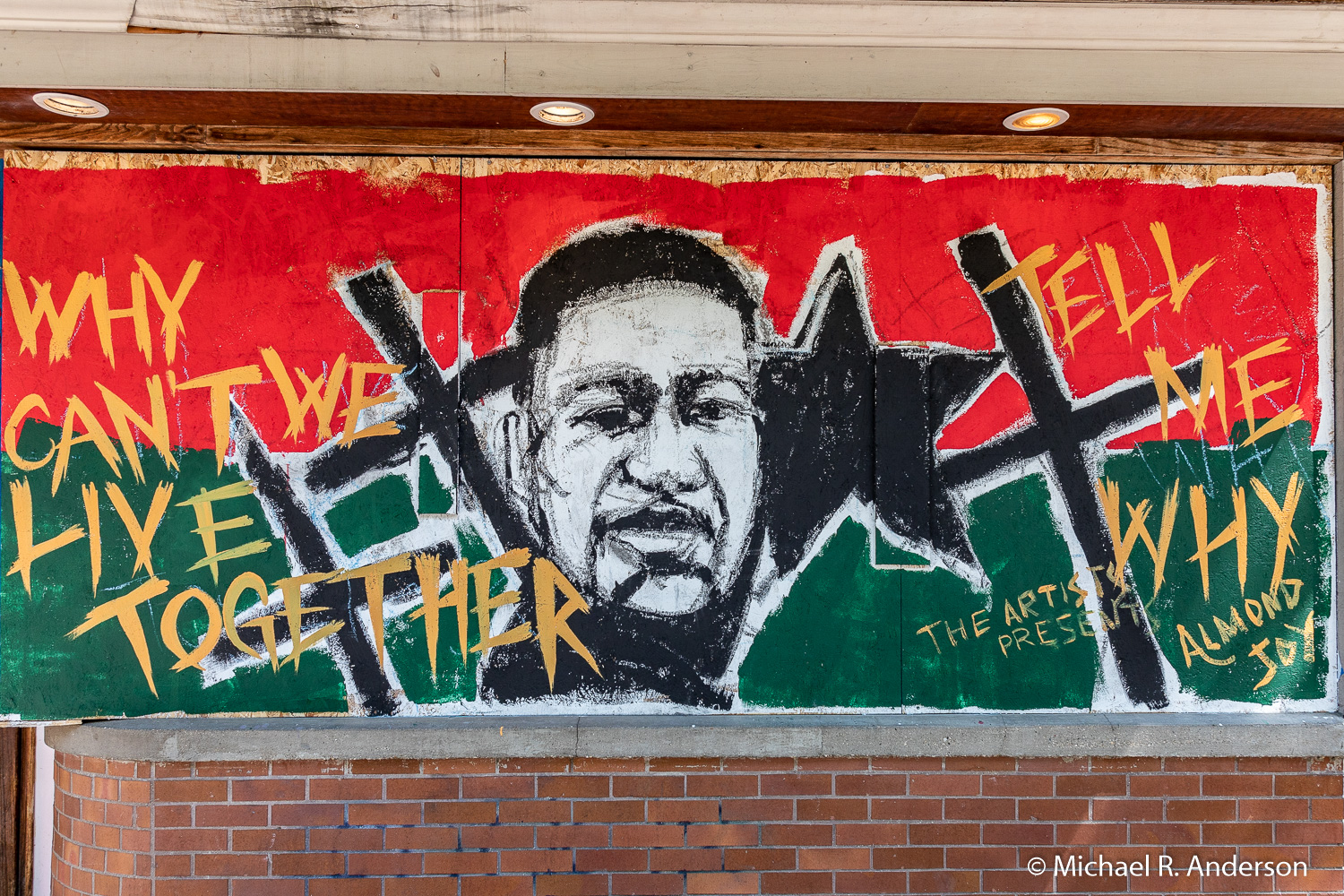
Over the years, State Street has been the center of many events, for reasons both good and bad. My memory encompasses many, including marches against the Viet Nam war, celebrations for the first Earth Day, parades for the Badger football team, and tens of thousands of women demanding equal rights and opportunities. Sadly, the most recent gatherings were in justified anger over the death of George Floyd, the African American man killed by police during an arrest in Minneapolis. Protests raged, not just across the country, but across the world. Will this finally be the straw that breaks the back of systemic racism? Unlike past events, however, I was not part of this one; corona virus and crowds gave this seventy-something man pause.
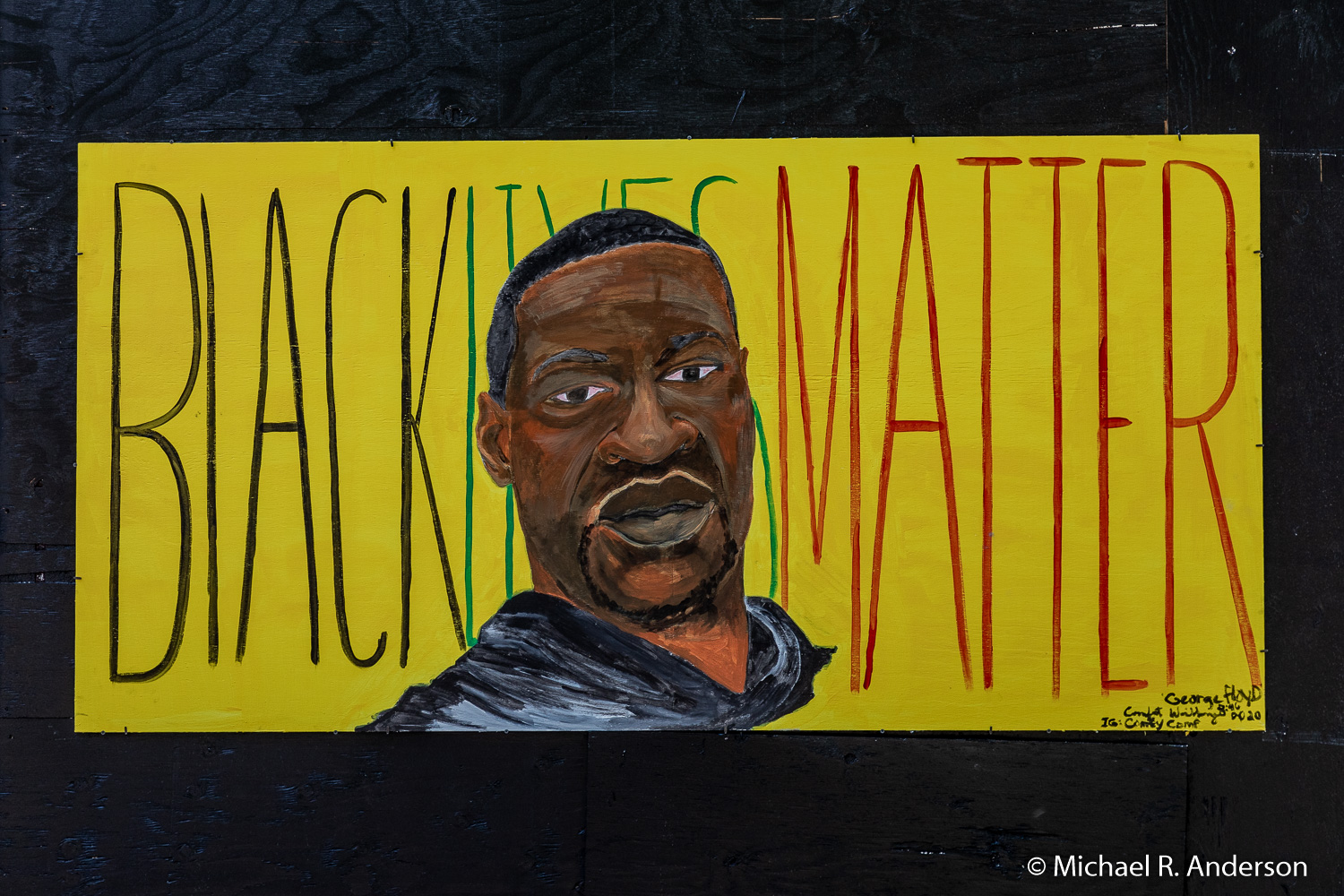
The rage generated violence and damage to scores of State Street businesses. Protests continue, but as they have calmed down, the plywood covering broken windows or protecting unbroken ones became the canvas for local artists. As reported in a story in the Wisconsin State Journal,
[a]rmed with brushes, spray cans, ladders, tarps and feelings of anger, hope and love, artists have brought their talents over the last week to State Street to help turn bland canvasses of plywood into what may be one of the city’s largest, collective public works of art ever created.
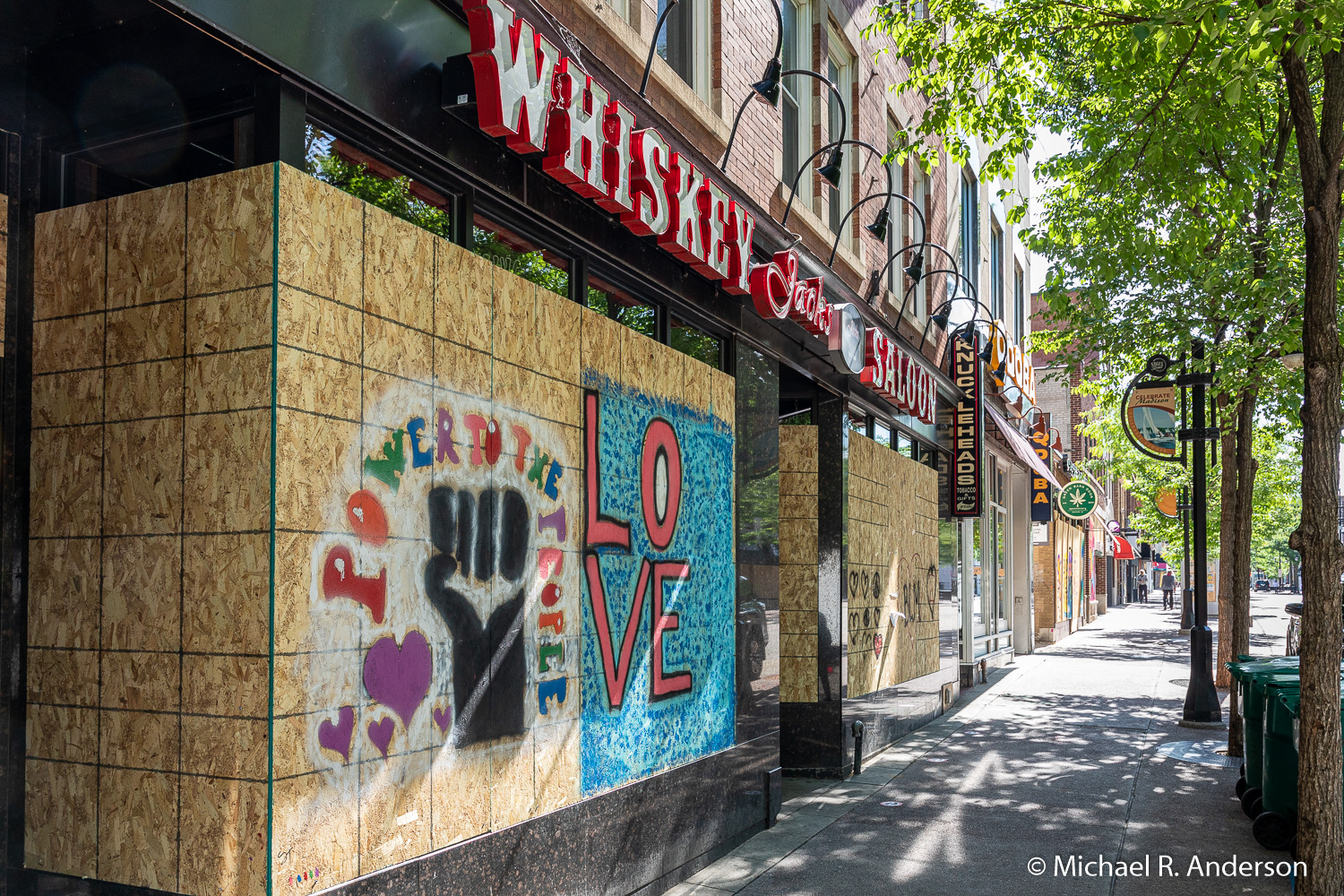
Shop employees created some of the art. Many of these works, however, were organized by Madison Arts, a city initiative that over the years has worked to encourage artistic activities. With mixed feelings, camera in hand, and mask-covered face, I wandered down the street one morning to see this for myself.
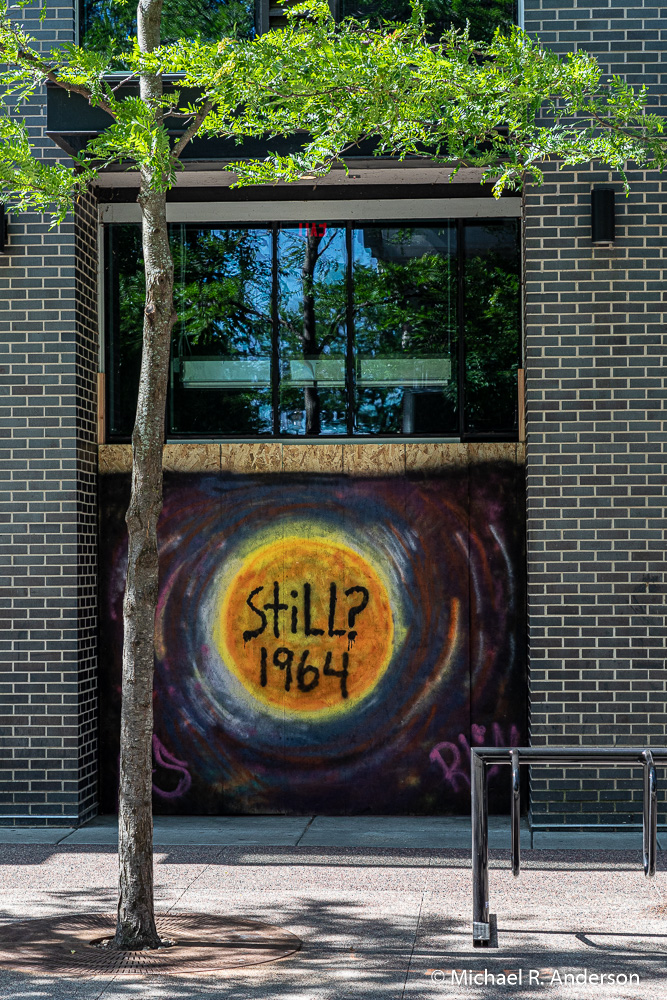
As a Baby Boomer, the image above really caught my attention. People think of the 60s as the era of sex, drugs, and rock and roll, or of the Viet Nam war, but it was also an era of heightened racial tension. Riots occurred around the country in places like Birmingham, New York City, Los Angeles (Watts), Chicago, Atlanta, and Detroit among other places. And, of course, riots erupted across the US when civil rights leader Martin Luther King, Jr. was assassinated in 1968. Have we made no progress in 56 years?
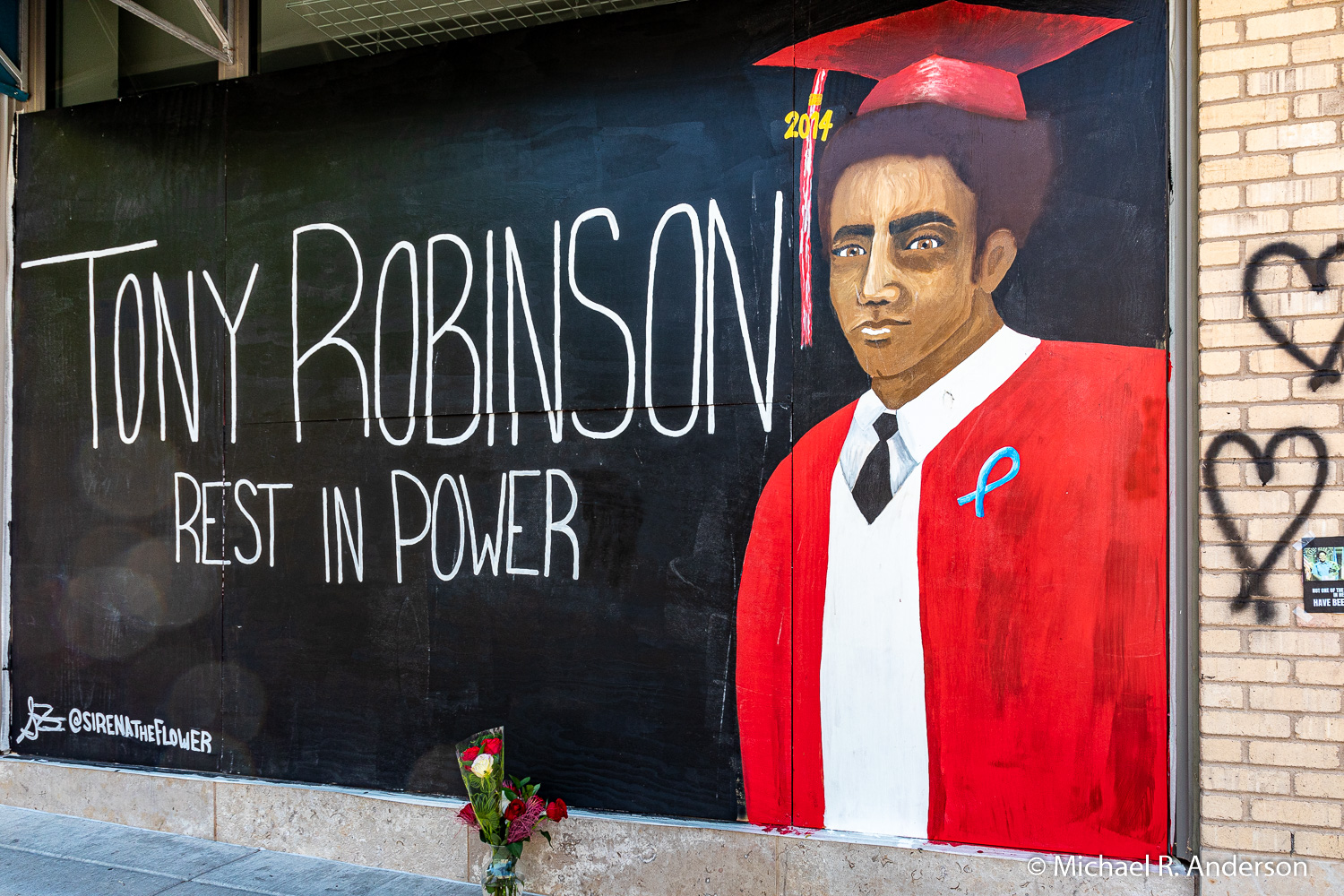
Tony Robinson was a 19-year old unarmed Madison man shot and killed by police in 2015. He and other victims were also remembered by the artists.
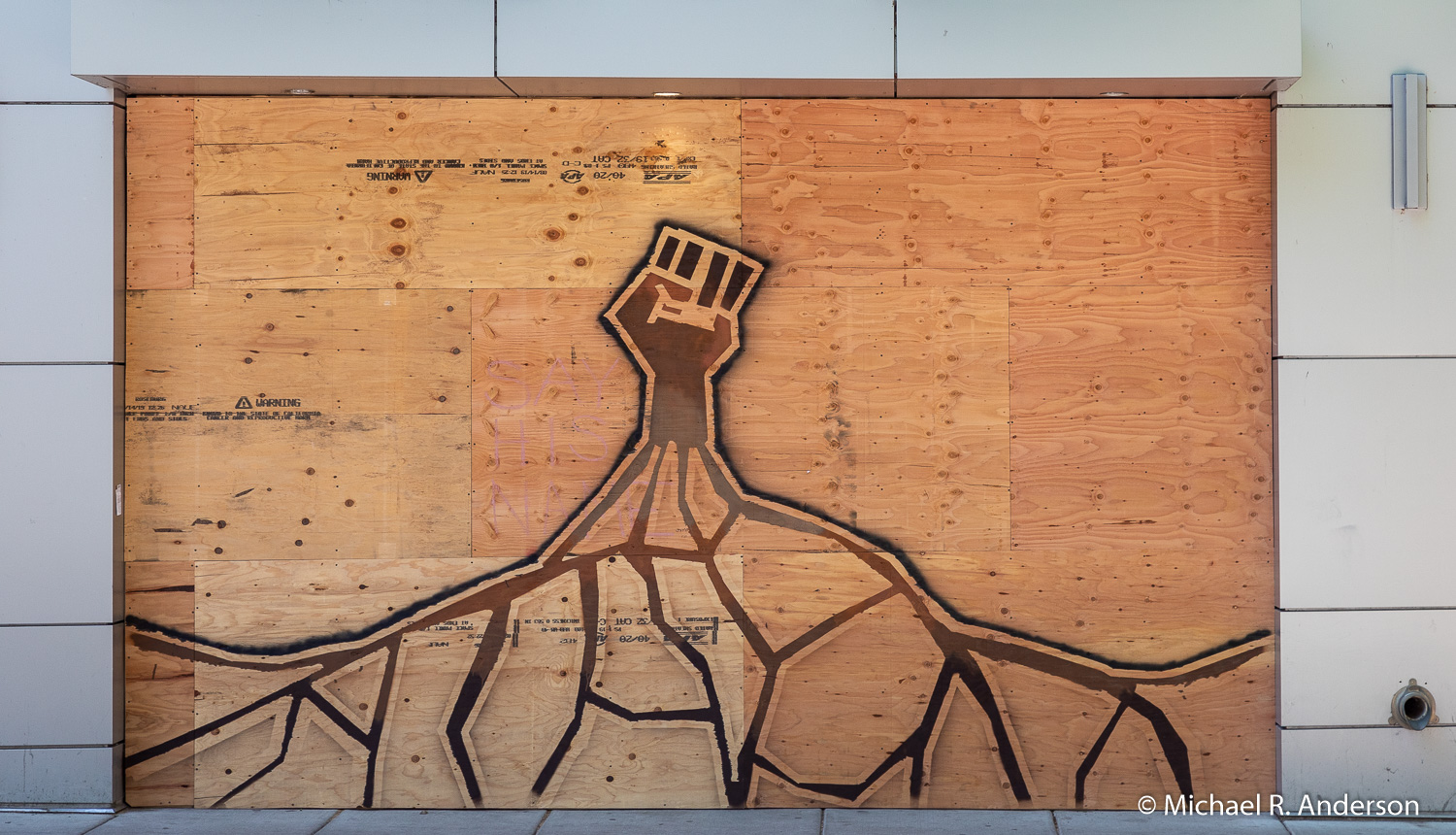
Power springs from the roots of the movement.
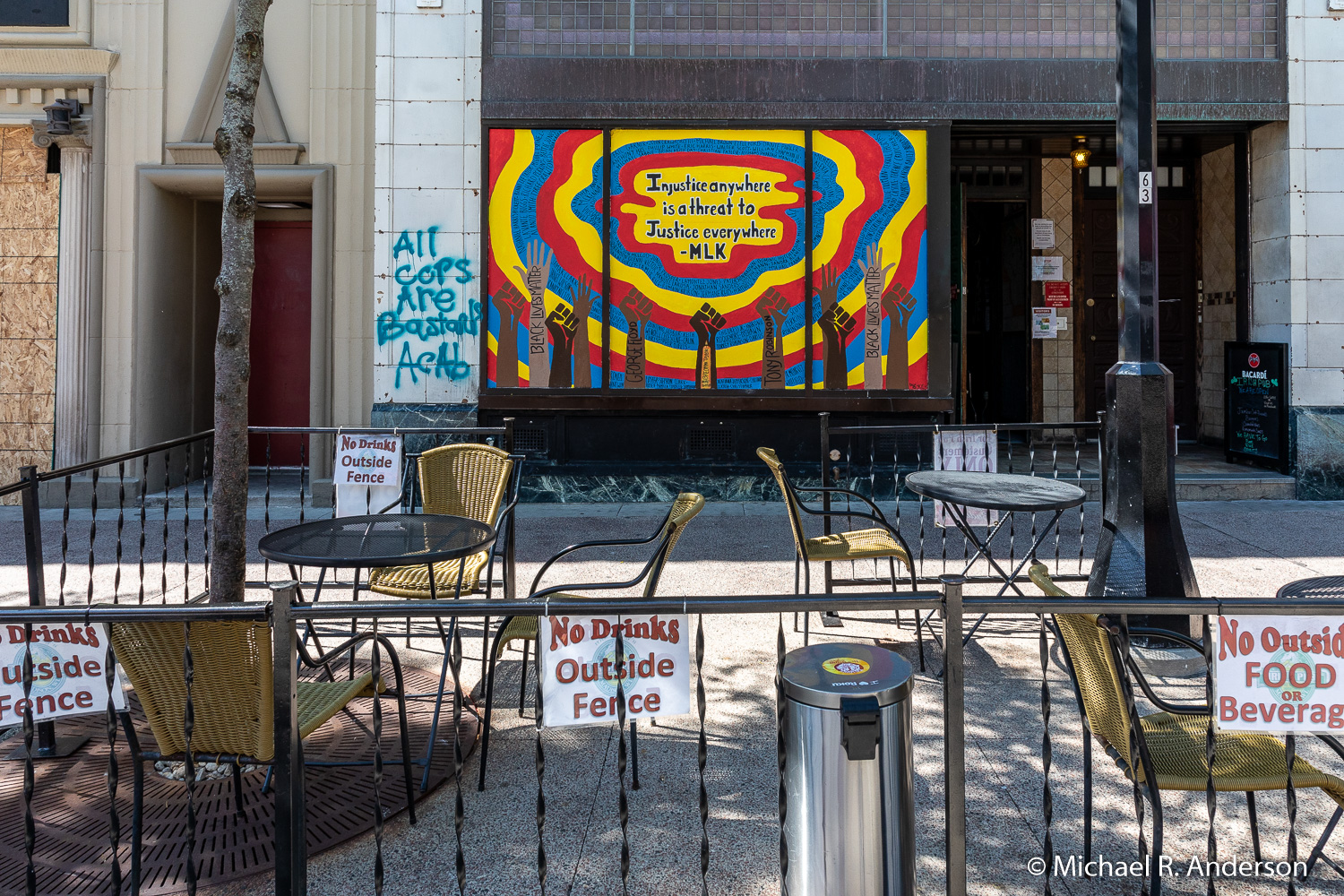
Remembrances of and quotes from Martin Luther King, Jr. are included in many of the works of art.
And, of course, our first Black President and First Lady are respectfully represented.
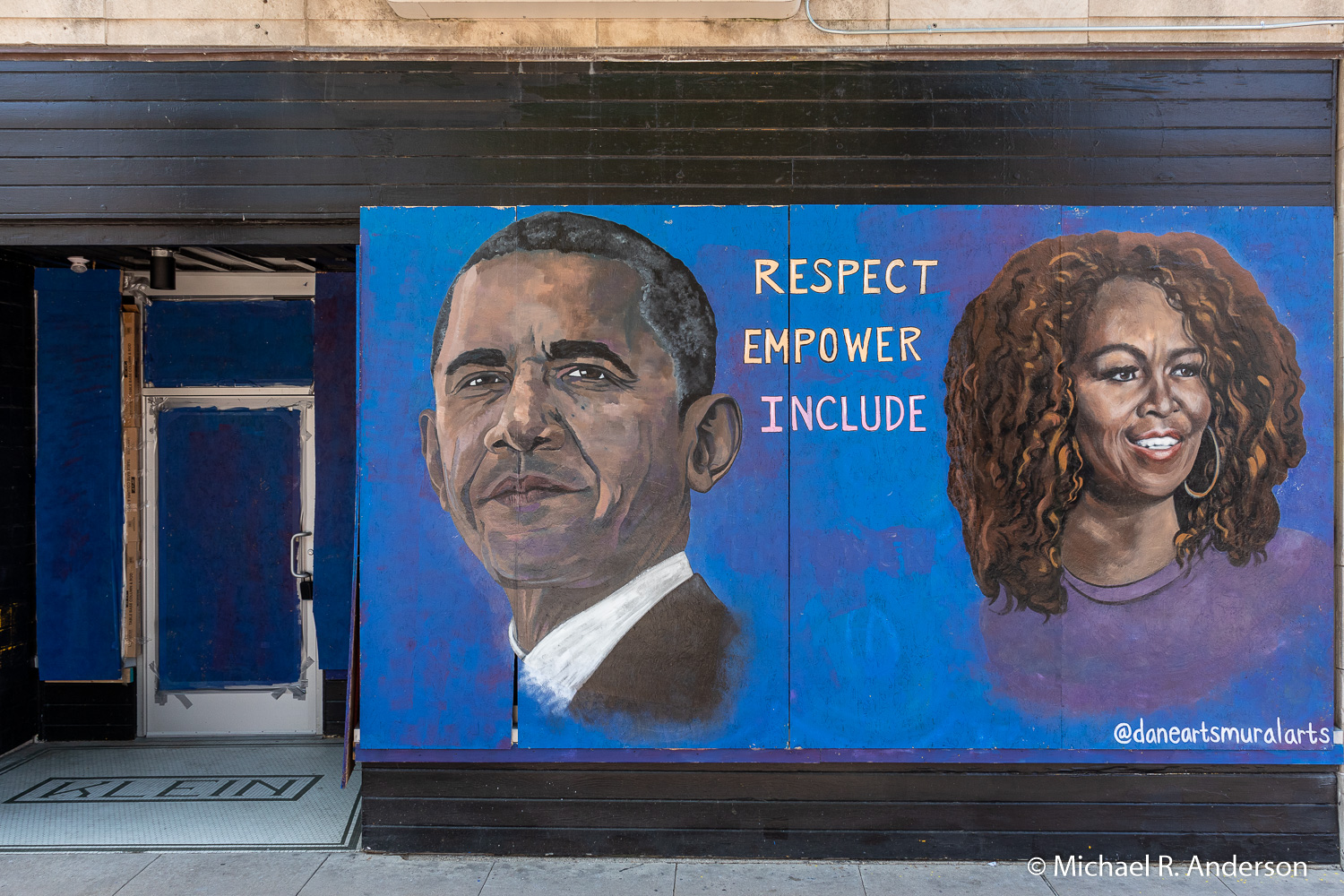
Most businesses along the street still were boarded up, providing vast canvasses to hold the works of local artists.
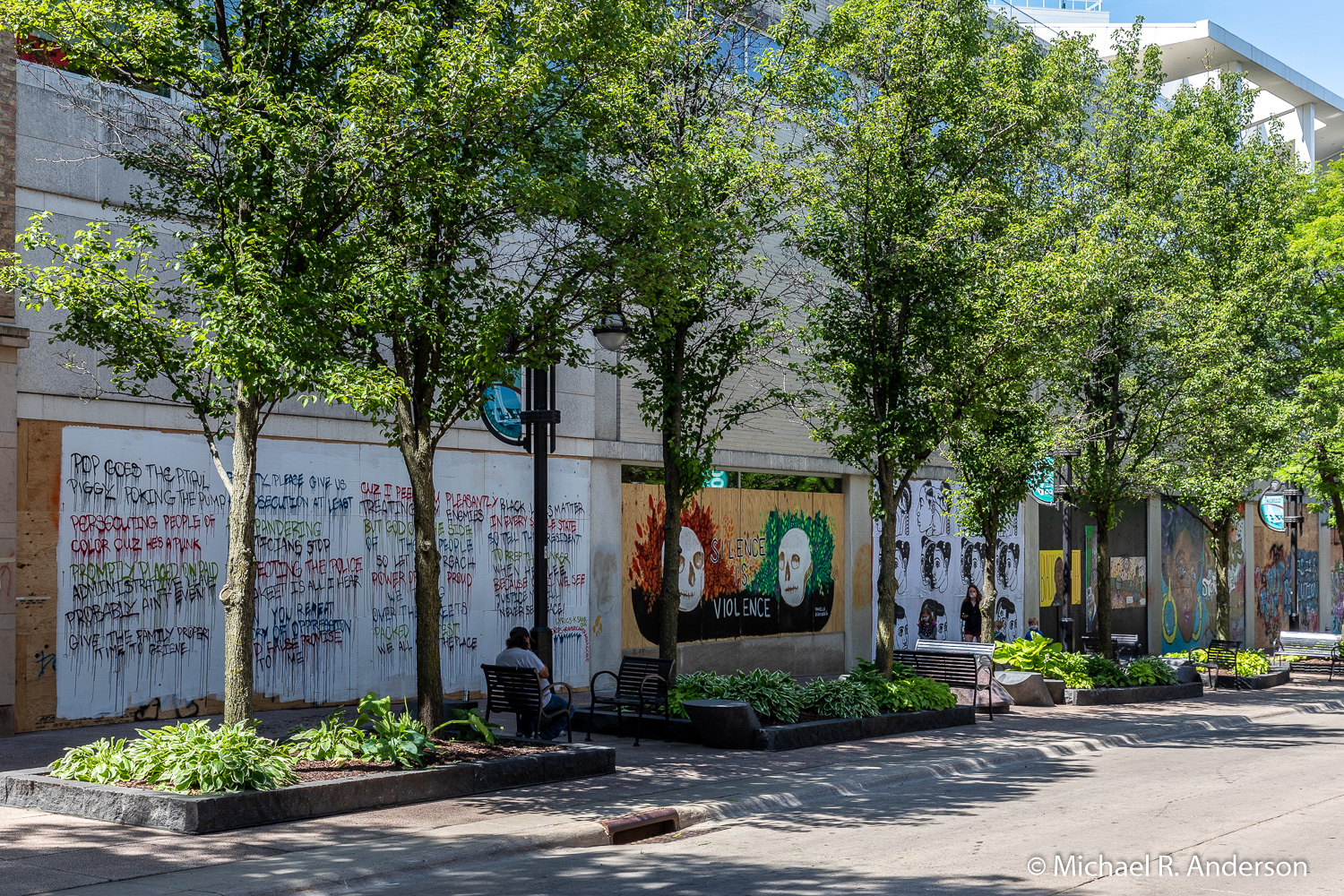
Dane County is just starting the next phase in its recovery plan for the COVID-19 pandemic, so, with calm returning to the streets, some businesses are removing the boards from their windows and doors. I don’t know if any of this artwork will be saved.
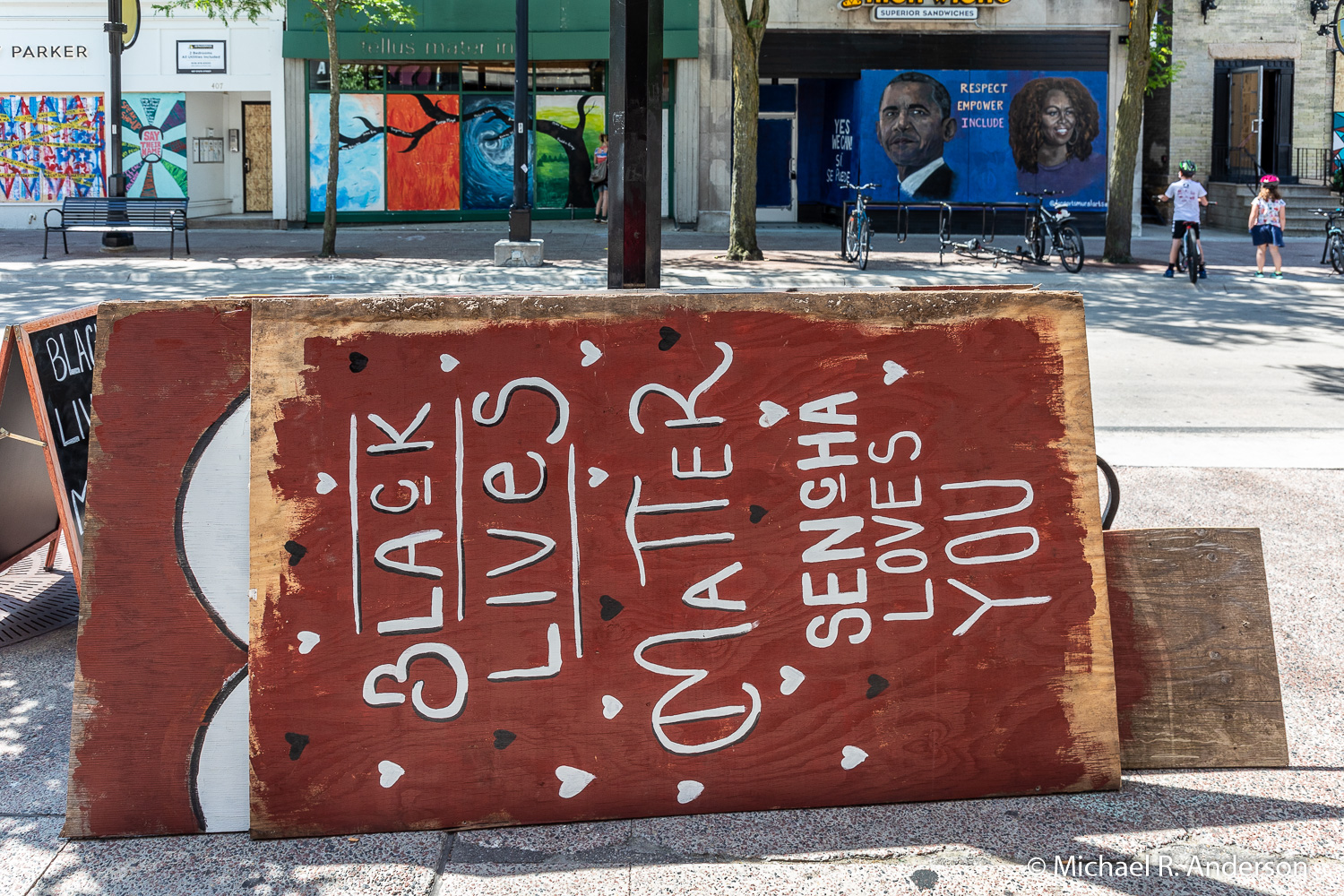
There are still some evening gatherings on Capitol Square, but, for now, the paint has been removed from Miss Forward and some flowers have been planted to remind visitors of the Black Lives Matter movement. Hopefully, important change will be born from the pains of this struggle.
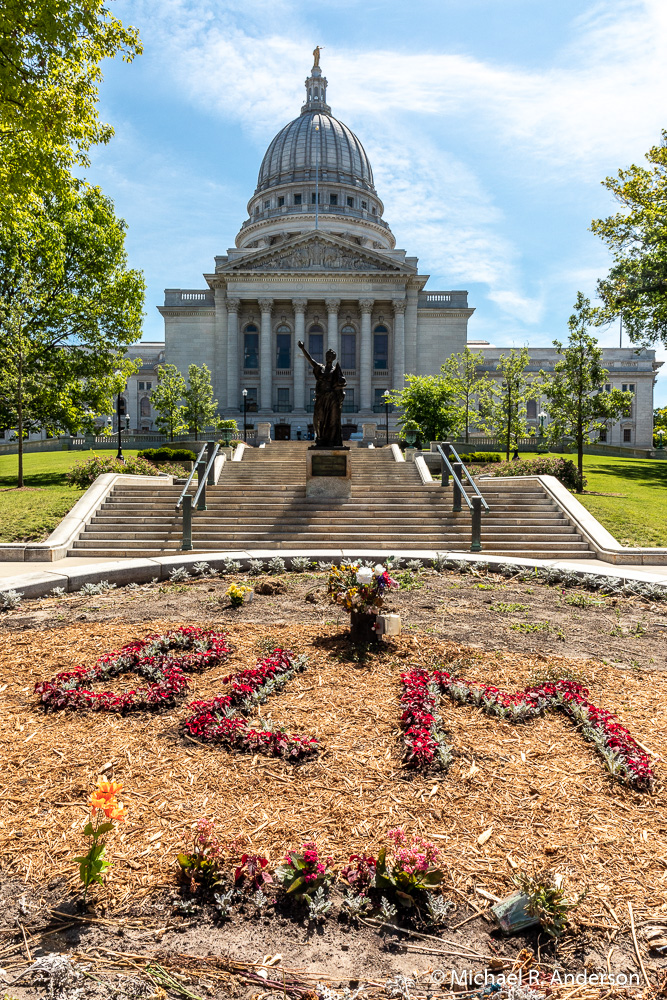
To see a gallery of 50 images, including those posted above, please see the Street Art for George Floyd gallery.